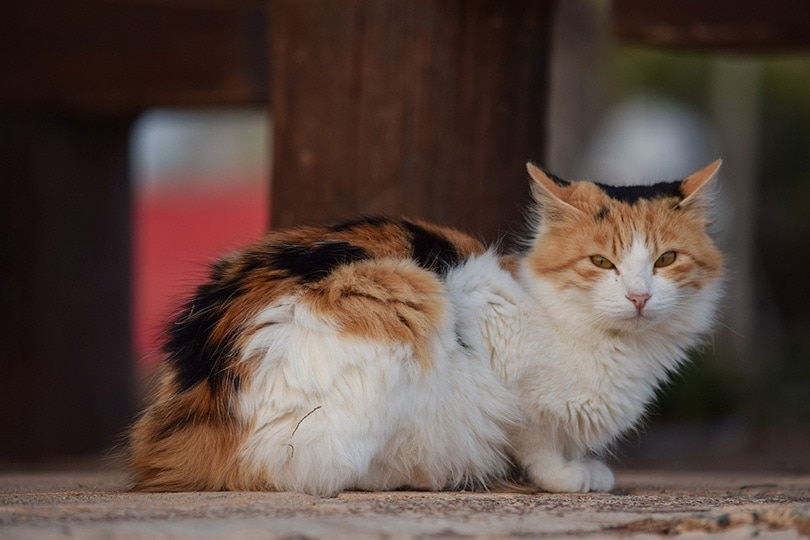Dealing with a stray cat that won’t leave can be challenging. Firstly, confirm if the cat is genuinely a stray and not someone’s lost pet. Check for identification tags or a microchip at a vet or shelter. If the cat seems hungry or in need, provide temporary food and shelter. Contact local shelters or rescues for advice or assistance, as they might have programs for strays or offer guidance on trapping, neutering, and releasing. Consider using humane traps if necessary and contact authorities or shelters for help.
Spend time with the cat to assess its temperament; if friendly, try finding it a loving home through social networks. Research local laws regarding strays, and above all, approach the situation with patience and kindness.
What confirms a cat as a stray and evaluates its needs effectively?
Confirming a stray cat’s status involves observing its behavior, checking for identification, and assessing its immediate needs to provide appropriate care and support.
Confirming if the cat is truly a stray
Confirming whether a cat is a stray involves observing its behavior and appearance. Stray cats might appear disheveled, lacking grooming, and could display skittish or cautious behavior around humans.
Additionally, they might not have a specific territory or owner. Observing the cat’s behavior over a period can help determine if it’s genuinely without a home.
Checking for identification or a microchip

Identification tags or microchips are common ways to identify a cat’s owner. A collar with a tag containing contact information indicates that the cat might have an owner. A microchip, which is implanted beneath the skin, can be scanned by a veterinarian or animal shelter to reveal the owner’s contact information. Taking the cat to a nearby vet or shelter for a microchip scan can help determine if it belongs to someone.
Determining if the cat needs immediate assistance such as food or shelter
Assessing the cat’s physical condition is crucial. If the cat appears malnourished, injured, or in need of immediate care, providing food, water, and shelter becomes a priority. Offering food (like cat food or wet food) and providing temporary shelter, such as a box with blankets, can offer immediate relief.
However, it’s essential to evaluate whether the cat truly needs assistance or if it’s self-sufficient and merely passing through.
How to offer temporary care and support for a stray cat?
Taking care of a lost cat for a little while means giving it food and a safe place to stay. You can also ask local shelters or rescues for help and advice. There are programs called TNR that can help take care of the cat’s needs and control the number of stray cats around.
Providing temporary food and shelter if necessary
If a stray cat appears hungry or in need of shelter, offering temporary care is crucial. Providing food suitable for cats, such as cat food or wet food, ensures they receive proper nutrition.
Additionally, creating a temporary shelter using a sturdy box or container lined with blankets or towels can offer protection from the elements. Placing the shelter in a safe, quiet area can help the cat feel more secure.
Contacting local animal shelters or rescues for advice and support
Local animal shelters or rescue organizations can provide valuable guidance and support when dealing with a stray cat. They may offer advice on how to care for the cat, provide information on available resources, or even have programs specifically designed for stray animal assistance. They might also be able to connect you with experienced individuals who can offer assistance or take in the cat if necessary.
Exploring programs for trapping, neutering, and releasing (TNR) through shelters
Many shelters have TNR programs aimed at managing the population of stray cats humanely. TNR involves trapping stray cats, spaying or neutering them, and then releasing them back into their environment.
This approach helps control the stray cat population and improves their quality of life while preventing further reproduction. Some shelters might offer these services or provide guidance on accessing TNR programs in the community.
How to handle a challenging stray cat situation effectively?

Managing a situation involving a stray cat may involve using humane traps if necessary, seeking help from animal control or shelters for capturing the cat safely, and ensuring compliance with local laws and regulations.
Using humane traps if the situation escalates or becomes unmanageable
Humane traps are designed to safely capture stray cats without causing harm. These traps typically have a trigger mechanism that closes a door when the cat enters to access food placed inside. Using humane traps can be a last resort if the situation with the stray cat becomes challenging or if you’re unable to approach the cat safely. Once captured, it’s important to handle the trap with care and seek further assistance or guidance on what to do next.
Contacting animal control or shelters for help in capturing the cat
If dealing with a stray cat becomes overwhelming or if you’re unable to manage the situation on your own, contacting animal control or local shelters can be beneficial. These organizations often have professionals trained in handling stray animals and the necessary equipment to safely capture them. They can provide guidance, assistance, or even dispatch someone to help capture the cat if needed.
Observing local laws and regulations regarding stray animal
Different regions have specific laws and regulations concerning stray animals. It’s important to familiarize yourself with these local laws to understand your rights and responsibilities when dealing with a stray cat. Some areas might have ordinances related to feeding stray animals, trapping, or releasing them. Observing these laws ensures that any actions taken are within legal boundaries and that the welfare of the cat and the community is considered.
FAQ’s
Is it bad to leave a stray cat?
Leaving a stray cat without care can pose risks to its health and safety. It’s best to seek assistance or provide necessary help if possible.
Will a stray cat starve if I stop feeding it?
Yes, if a stray cat relies on provided food, suddenly stopping could lead to starvation. However, cats can scavenge for food if necessary.
Should I leave a stray cat alone?
Approaching cautiously with care might be beneficial. However, if unable to assist, it’s best not to disturb or stress the cat further.
How long do stray cats live for?
Stray cats’ life spans can vary, influenced by factors like environment, access to food, diseases, and human intervention. It might range from a few years to over a decade.
Do stray cats pick their owners?
Stray cats may develop bonds with humans who offer them care and food, but it’s more about finding a reliable source of sustenance and safety.
What diseases do stray cats carry to humans?
Stray cats might transmit diseases like rabies, toxoplasmosis, cat scratch fever, and various parasites through scratches, bites, or contact with feces or saliva. Regular veterinary care helps mitigate risks.
Final Words
In conclusion, dealing with a stray cat that won’t leave requires patience, care, and responsible action. It’s important to assess if the cat is truly a stray and offer temporary help if needed, like providing food and shelter. Contacting local animal shelters or rescues for guidance is helpful, and exploring programs like trapping, neutering, and releasing can assist in managing the situation.
Sometimes, using humane traps or seeking help from animal control might be necessary. Following local laws regarding stray animals is essential too.

